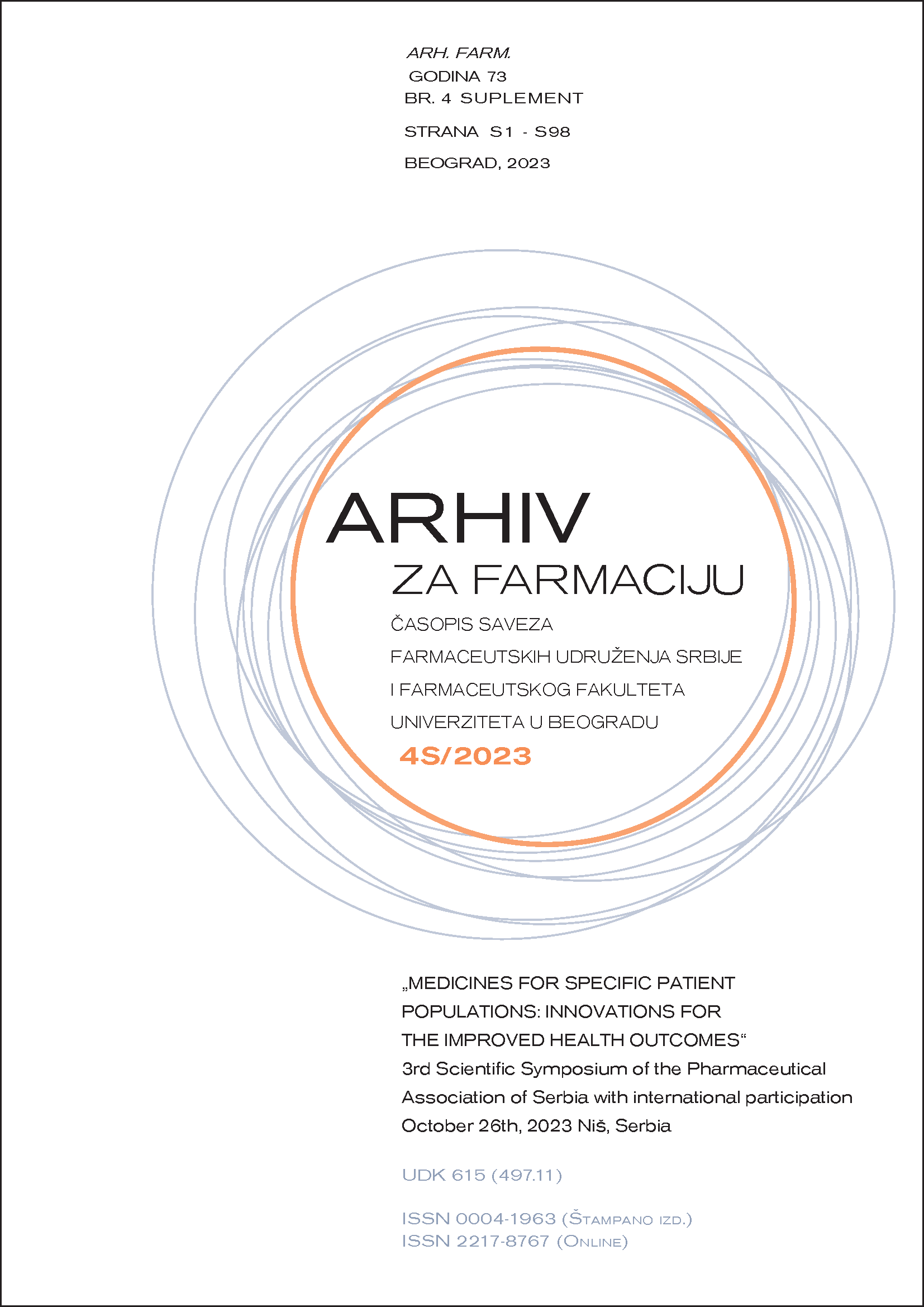IN VITRO ANTIHYPERGLYCEMIC ACTIVITY OF BLACK PEPPER (Piper nigrum L.) FRUCTUS ETHANOLIC EXTRACTS
Abstract
The global diabetes prevalence in 2019 was estimated to be 9.3% (463 million people), rising to 10.2% (578 million) by 2030 (1). One of the more important mechanisms responsible for the treatment of diabetes mellitus is the reduction of gastrointestinal absorption of glucose by inhibiting enzyme α-glucosidase. Therefore, α-glucosidase inhibitors are receiving increasing attention due to their therapeutic potential in reducing diabetes (2). The ability of black pepper fructus ethanolic extracts (BPFEEs) to inhibit the α-glucosidase was determined by method according to Apostolidis et al., with slight modifications (3). The extracts were obtained by maceration (M), reflux (RE), ultrasonic (UE) and Soxhlet extraction (SE). All examined extracts showed in vitro antihyperglycemic activity (M: EC50 = 6.689 ± 0.109 mg/ml; RE: EC50 = 5.189 ± 0.046 mg/ml; UE: EC50 = 5.565 ± 0.065 mg/ml; SE: EC50 = 6.166 ± 0.069 mg/ml), with the highest inhibition (the lowest EC50 value) of α-glucosidase by RE extract, while the lowest inhibition was detected in M extract. It is assumed that the alkaloid piperine, which is most often present in the BPFEEs, responsible for the antihyperglycemic activity. Therefore, the task of future research will be focused on determining the qualitative and quantitative chemical composition of BPFEEs. The present study is of great interest due to fact that nowdays is imperative in search for natural compounds that could be developed into a drug for the management of diabetes mellitus.
References
1. Saeedi P., Petersohn I., Salpea P., Malanda B., Karuranga S., Unwin N., Colagiuri S., Guariguata L., Motala A.A., Ogurtsova K., Shaw J.E.,Bright D.,Williams R., IDF Diabetes Atlas Committee. Global and regional diabetes prevalence estimates for 2019 and projections for 2030 and 2045: Results from the International Diabetes Federation Diabetes Atlas. Diabetes Res. Clin. Pract., 2019; 157: 107843.
2. Sulaimon L. A., Anise E. O., Obuotor E. M., Samuel T. A., Moshood A. I., Olajide M., Fatoke T. In vitro antidiabetic potentials, antioxidant activities and phytochemical profile of african black pepper (Piper guineense). (2020). Clin. Phytoscience, 2020; 6(1): 1-13.
3. Apostolidis E., Kwon Y. I., Shetty K. Inhibitory potential of herb, fruit, and fungal-enriched cheese against key enzymes linked to type 2 diabetes and hypertension. Innov. Food Sci. Emerg. Technol., 2007; 8(1): 46-54.

